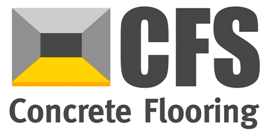What to know about concrete resurfacing
Concrete floors in both interior and exterior locations can chip or break over time. Reasons for this may include weather damage or heavy use. It is also possible that a poor cement mix or incorrect sealing can cause damage. many people can resurface their concrete themselves in cases of minor non-structural damage.
A broken concrete floor is unsightly. There are also many aspects of safety, which people must be aware of. Structural cracks and breaks add to the likelihood of people injuring themselves in trips or falls. Small cracks may also absorb water deep into the surface and undermine the integrity of the foundation.
Concrete resurfacing can repair minor damage and restore a floor, but it will not fix deep cracks or heaving. Resurfacing will simply help make it more pleasant in appearance.
Here we will explore some resurfacing ideas and options, as well as some tips on how to do it effectively.
When does concrete require resurfacing?
Concrete will have a level and uniform appearance in ideal conditions. This is an indication that the surface is successfully keeping out water or maintaining a strong foundation for a structure.
Certain types of concrete floor get a lot more wear than others. Examples include garages, which will regularly have very heavy vehicles driving on them. A concrete driveway may receive damage in a similar way. Driveways also do not ordinarily have any form of cover, which can add to the overall level of wear.
People must bear in mind the following when deciding whether their concrete surface requires repair:
- Flaking and damage: If there is a necessity for resurfacing, it is likely to be relatively obvious by the appearance of the floor. People can look for flaking and small pits in the surface of the concrete. Scratches to paint or other finishes are another key indicator.
- Spalling: People can look for spalling on the surface of the concrete. It has a wrinkly look. Spalling is a sign that water is present within the surface. It can commonly occur when people use a wire mesh in their foundation, or if the foundation is poorly stamped, which can cause rust and oxidation. Other causes include the salt that people use to defrost ice in colder climates.
- Broken, cracked or damaged edges: A key issue on concrete slabs is the edges. They can crumble or degrade, particularly on driveways where vehicles will frequently add pressure. People can look for these issues at the joins between their slabs. If the surface is a single pour the outer edges are where to look.
The other factor that may indicate a floor may require resurfacing is the age of the concrete. If people move into a new house this may not be immediately obvious. It is a good idea to ask about the age of concrete when viewing houses, as it may be a sign that more work is necessary.
A common and frustrating cause of cosmetic issues in a concrete surface is the use of poor quality materials. As professionals with many years of experience, this is especially disappointing to see in the industry. It is also one of the reasons why we only use the best materials in all of our projects throughout the UK.
Tips and ideas for concrete resurfacing
There are a lot of products available to resurface concrete. Some people find working with concrete intimidating, but using these products is simple enough for most people to do themselves. People must remember that resurfacing will not fix significant damage and cracking.
Concrete resurfacers are widely available. They are pourable and many are self-levelling, which can make the process easier. Steps people should follow for a successful resurfacing project include the following:
- Clean the area: People must always resurface on a clean surface. This means removing any forms of debris or dust. Pressure washing can help clean very well, particularly outdoor areas or in garages where stains are more likely to occur. Resurfacers work on a moist surface so people will need to hose it down.
- Mix the resurfacer: Try to keep your mixing to one bag at a time, because it will harden. It may be tempting to do more than this when covering a larger area, but it is likely that there will be an unevenness to the mix. People should mix it with water in a bucket until it is a pourable consistency.
- Pour the mix: The resurfacing mix will now be ready for pouring. People should pour a small amount at a time and not all at once, this will help to make it easier to spread the mix evenly. There are a lot of ways to spread the mix, but a simple method is to use a trowel.
It is an optional but beneficial step to add a second coat. Once the surface is even people can also add some finishing using a brush. Depending on the use of the surface this may be desirable as a smooth surface can be slippery in wet conditions.
After all of these steps are complete the only thing left to do is let the surface dry. The drying process will normally take a few days to complete.
Concrete resurfacing for cosmetic repair
It can be frustrating to discover that a surface requires more than just cosmetic repair. In this case, our expert team can provide services to repair and replace concrete in a range of residential and commercial settings.
People should not take any more serious issues and damage lightly, as this can undermine the entire surface. If there is a foundational issue this requires correction as it can possibly result in the surface being unsafe.
While resurfacing may help with cosmetic issues, people can contact us for a quote on any more substantial repairs.
